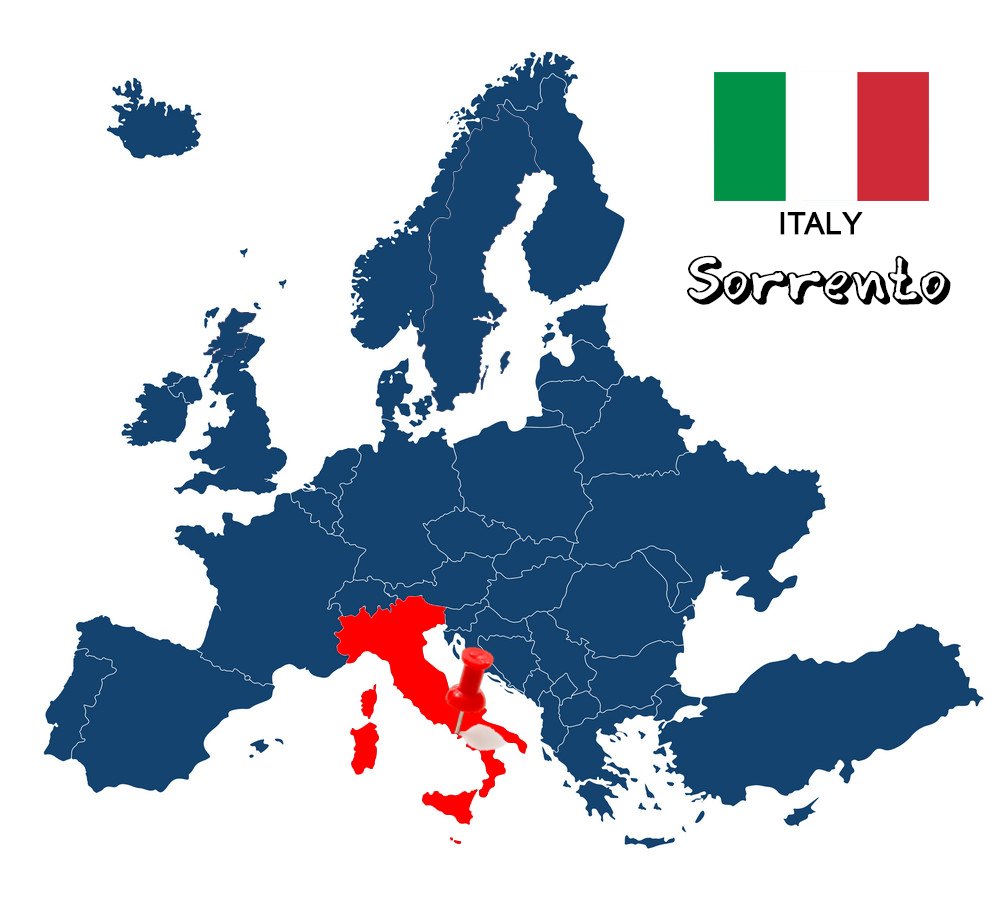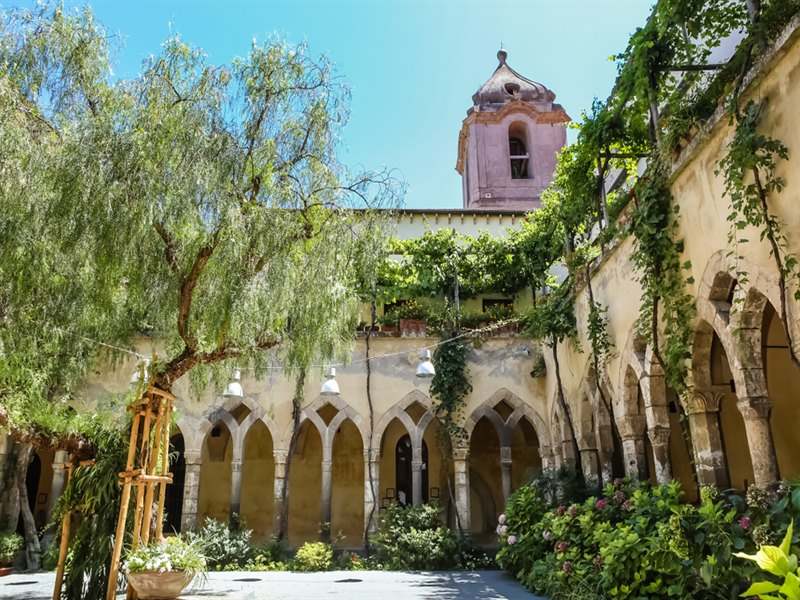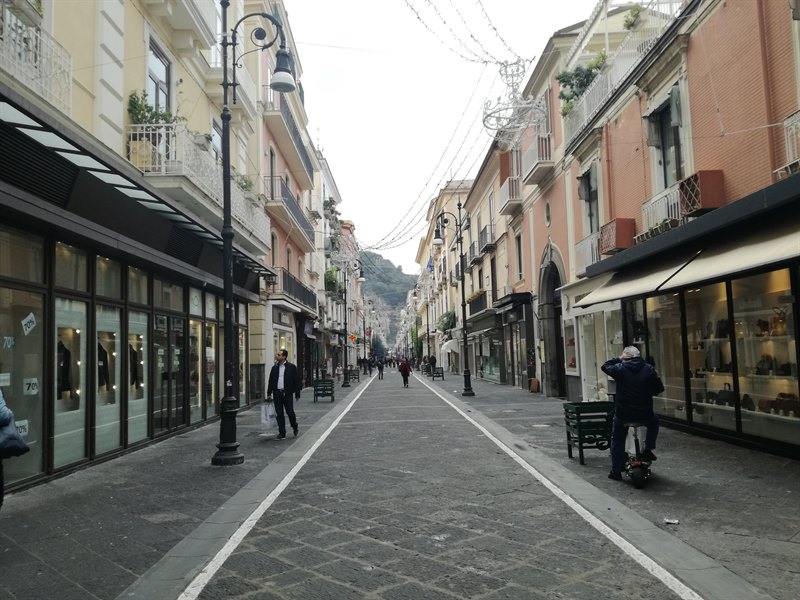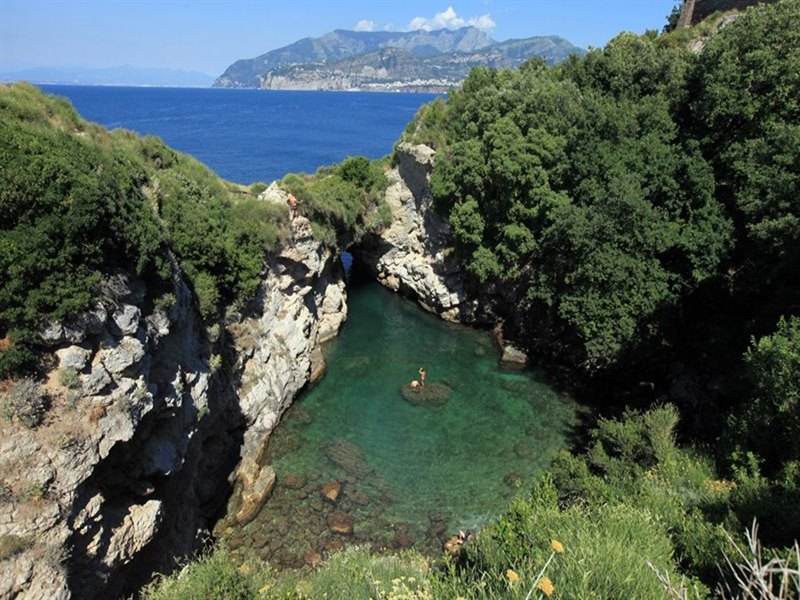
With its picturesque steep coastal hills overlooking the Mediterranean, the bustling city center and the spectacular views over the water, this resort town will not disappoint you. Sorrento is an ideal city for exploration, as well as a convenient for exploring the surrounding coasts and their attractions.
A few words about the city
Sorrento is located in southern Italy on the peninsula of Sorrentine and is often referred as the "gateway to the Amalfi Coast." It is a popular tourist destination for more than a century, and almost a must stop for visitors to Naples and Pompeii. The population of the city is estimated at 16,547 residents, mainly occupied by tourism. The Sorrento Peninsula offers stunning views of Naples, Mount Vesuvius and the island of Capri and has inspired many artists such as Enrico Caruzo and Luciano Pavarotti. Vir' o mar quanto è bell, spira tanto sentimento!"(Look at the sea, how beautiful it is, inspires so many emotions!). This particular verse comes from the classic song “Torna a Surriento”, one of the many songs dedicated to the famous Italian city. The world-famous limoncello, the digestive local lemon liqueur, is also made here, while the surrounding countryside also produces citrus, wine, walnuts, almonds and olives. So I will try to present you the city of lemons through my own eyes and share with you what I think one should see, visiting for the city for the first time.
Marina Grande-Marina Piccola
I couldn't begin my reference to Sorrento from the two most recognizable spots in the city, the Big Port (Marina Grande) and the Little Port (Marina Piccola). The oxymoron, in this case, is that in fact the small port is the largest.
Typing “Sorrento” at Internet, the first photo to appear is that of the colorful Marina Grande. Although this spot is one of the most popular tourist resorts in Italy, has retained its rustic charm, original identity, and unparalleled aesthetics. The isolated atmosphere of the harbor is derived from its protected position, created by the promontory which separates the city of Sorrento from this delightful hidden harbor. The Cape was once the place of a Roman villa belonging to the nephew of the Emperor Augustus. Today, along the port you will find dozens of restaurants overlooking the sea specializing in local cuisine.
Under the Villa Comunale, which I will mention below and next to Marina Grande, is the Marina Piccola. All boats arriving in Sorrento are anchored there, while ferries to Capri (20 minutes), Naples (30 minutes), the Amalfi Coast and the islands of Ischia and Procida begin from there. Finally, during the summer months, it is an awesome beach with many organized beach bars, which are literally on the water.
Chiesa di San Francesco - Chiostro di San Francesco
At F. Saverio Gargiulo Square, you can admire the settlement complex dedicated to Saint Francis of Assisi, which includes the church and the monastery of Saint Francis.
From the outside, the first impression of the church of St. Francis (Chiesa di San Francesco) is a modern building, but in fact it has very ancient origins. According to legend, the church was built in an Ottoman complex founded by Sant'Antonino, but the first substantiated historical information dates from the founding of the Franciscan order in the late 13th century. The history of the church and its ancient past give us the impression that there is no single architectural style, since the first thing you see when you enter the temple is the multicolored baroque marbles, but there are also Gothic influences from the fourteenth century.
Right next to the church, there is a small door that will lead you to a magical place, the monastery of St. Francis (Chiostro di San Francesco). As you pass the threshold, you immediately notice a mystical atmosphere, with silence and serenity prevailing. A special light illuminates this place especially at certain times of the day, where the sun's rays create a striking contrast to the shades of the colonnade. In the center of the monastery is a tree with an oblique stem, which creates one of Sorrento's most picturesque spots for weddings and photography exhibitions. As in other buildings in the city, pieces of earlier construction were used in this one. Indeed, there was a pagan temple at that point, whose three columns exist to this day. The church and the monastery suffered serious damage from the earthquake of 5th June 1688, after some of the cells of the monks, the refectory and part of the side chapel of the church collapsed, but the complex was partly renovated in the early 1700's. Entrance to the church and temple is free from 07:00 in the morning until 19:00 in the afternoon.

Villa Comunale
Next to the St. Francis Monastery is Villa Comunale. It is a small-charming park, resembling a square, but in essence it is a top attraction of Sorrento. The reason is not the exotic vegetation, with the beautiful seasonal flowers and the large trees that provide shade from the Italian sun, but mainly the wonderful panoramic view. Due to its location, as it is located on a hill, you will be able to see in the East the Gulf of Naples and Vesuvius, while from the West the Capri. Locals used to say that from here you will see the most beautiful sunset you have ever seen (perhaps they may not have visited Santorini). During the summer months there is a lift that will take you down to Marina Piccola and beach bars.
Piazza Tasso
The Tasso Square (Piazza Tasso), named after the Italian poet Torquato Tasso, is the heart of Sorrento and the place where everything starts. Built on one of the many “valloni”, i.e., small gorges, which have been carved over time by streams coming from the hills behind Sorrento, to the Mediterranean Sea. At the bottom of the canyon, you can still see the ruins of one of the many water-powered factories. In the center of the square, there is the statue of St. Anthony (Sant’ Antonino), patron of the city.
That's where Sorrento's most beautiful walk begins. I am referring, of course, to the picturesque pedestrian street of Corso Italia, which starts at Piazza Tasso and ends at the hospital. Along the way you will find hundreds of shops of all kinds, restaurants, cafes, ice cream parlors, and it is also the ideal place to drink an espresso or the traditional limoncello.

As it is crossed, it is impossible not to notice in your left hand the Cathedral of Sorrento (Cattedrale di Sorrento). It is a Roman Catholic cathedral, dedicated to Saints Philip and James. It was originally constructed in the 11th century and rebuilt in the 15th century in romanesque style, but has retained a lot of pieces from various eras and styles, that make it unique. The base of the bell tower dates back to the time of the Roman Empire, and the facade dates back to 1924, while the main doors are 11th century from Istanbul! Admission is free.
Bagni della Regina Giovanna
At the point of Capo di Sorrento are the ruins of a Roman villa, the Villa Pollio Felice, dating back to the 1st century BC, as well as a tiny natural pool, the Regina Giovanna. According to legend, this particular spot was a royal “erotic foliage”, where Queen Giovanna d'Angio swam and entertained with her lovers, away from the eyes of others. The swimming pool is surrounded by steep rocks that separate it from the sea, creating a backdrop extracted from film. You can reach it either by boat or on foot, as there is a path that will lead you there. The large rocks on each side make diving and climbing difficult, but swimming there will offer you an unforgettable experience.

The museums
If you think Sorrento is missing art, then you're mistaken. The Museo Correale di Terranova has been described as "the most beautiful provincial museum in Italy"! Started as a temporary exhibition of the collections of the houses of the family Correale (hence the name of the museum) in Naples and Sorrento, but soon established itself as a permanent art space. The museum presents collections of Neapolitan painters dating back to the 17th and 18th centuries. It also contains valuable ceramics, Murano glassware, Bohemia crystals and a watch collection. It is also worth visiting for the wonderful view to Naples and Vesuvius, but also for its beautiful garden full of birds. The entrance costs 8e.
Detailed wood carving is an art with a long history in Sorrento, something you will find both in churches (especially the cathedral) and in stores throughout the city. An 18th-century mansion houses the lnlay Wood Museum (Museo Bottega della Tarsia Lignea). This is an area that includes a collection of furniture made in the last century and a section which is dedicated to the modern pieces of modern design. And here the entrance costs 8e.
How to go
There is no airport in Sorrento, so you should reach the city by train or by car from a nearby city. The most convenient is, of course, Naples. As we have seen in a previous article, Thessaloniki is connected by air to Naples and the airport Aeroporto Internazionale di Napoli, via Ryanair. With proper planning one can find tickets starting from 24€ round trip! You can then get a train ticket on the circumvesuviana line from Garibaldi Central Station, which costs around € 3.5 round trip and reach Sorrento in approximately an hour and a half.
Where to stay
The truth is that the accommodation in Sorrento is particularly expensive during the summer months, as it is considered a top travel destination. I would therefore suggest that you avoid accommodation very close to the sea, which take advantage of the view and overestimate the prices, looking for something close to the city center since the distances are short. A good choice is Sorrento Apartments, in the heart of Sorrento just 100 meters from the sea, offering good value for money in one of the most beautiful spots in the area.
How to move
The center of Sorrento is relatively small, and you can easily walk on foot, so you will fully discover its beauty. The areas around Marina Piccola and Marina Grande are below the centre, so it is more convenient to use a bus to reach them. Tickets cost 1.20e and can be purchased either from the grocery stores or from the train station, but not from the driver.
What to eat
What the region is mainly famous for is, as I mentioned in my introduction, the limoncello. It is a digestive local lemon liqueur, which is a favorite habit of the locals. You will find the best limoncello in I Giardini di Cataldo. Since you are in the Italian south, you should also try its specialties, which are focused around pasta and seafood. The signature dish of the region is Gnocchi alla Sorrentina, i.e. gnocchi with red sauce of local tomatoes and basil. Also, very common dishes are the Spaghetti e Vongole, i.e. spaghetti with mussels and pizza marinara, only with red sauce. Last but not least is the Treccia cheese, which looks like mozzarella.
Useful information

In Italy we travel with a passport or a new type of Police identity card, where the information is written in Latin characters.
In Sorrento the language used is, of course, Italian. But most, if not all, speak English, so ask for clarification in English.
The currency of the country is the Euro.
Sorrento is one hour behind Greece (GMT +2).
There is no Greek Embassy or Consulate in Sorrento, so if you need anything you should contact the nearest one, located in Naples in Corso V. Emanuele Street, 86 and its phone is (0039081) 7612466.
The railway station of Sorrento is close enough to the center, so you can easily reach it on foot, admiring the lovely scenery approaching, or use one of the local buses.
Sorrento is a purely summer destination, so be sure to choose it this time. Otherwise, you will be surprised, since most shops, restaurants, cafes and any attractions are usually closed.
Recommended excursions → Naples, Amalfi, Positano

If this article seemed interesting or contributed to your quality information, then you can like my facebook page: o_thessalonikios or follow me on instagram!
Mouzakidis Pantelis
